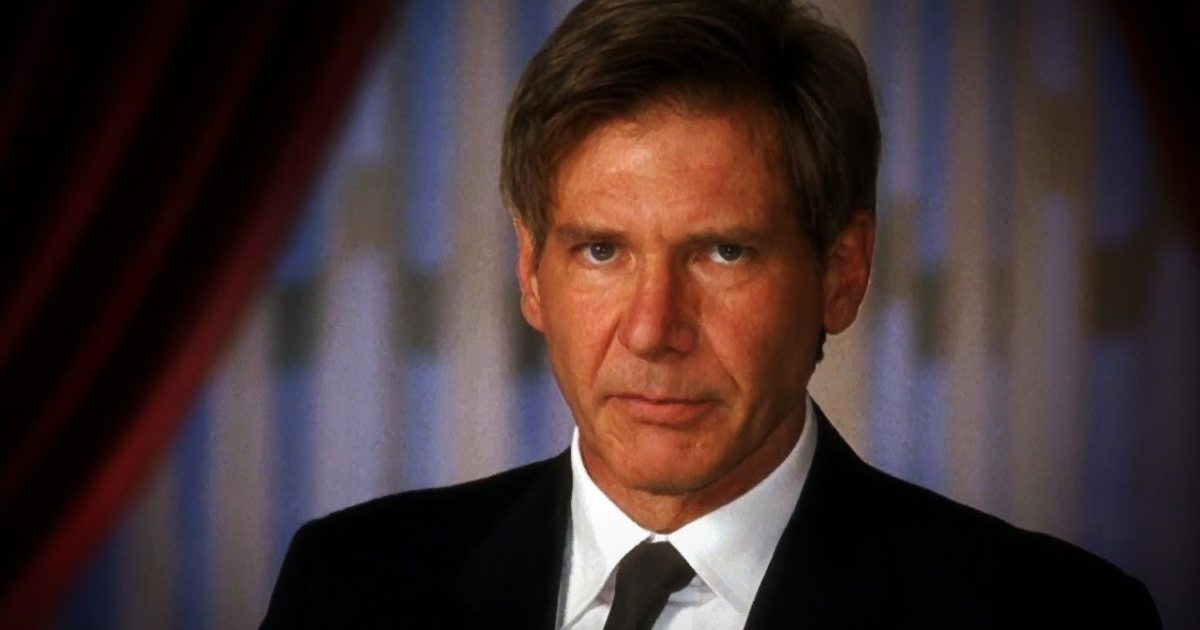Having thrilled us in such roles as Han Solo, Indiana Jones, Jack Ryan and The Fugitive’s Richard Kimble, Harrison Ford was elected to the highest office of action heroes with Air Force One, a Die Hard-esque thriller in which the screen legend portrays the President of the United States. Air Force One excited audiences on release in 1997 – but did you know the following facts about the film?
20. Kevin Costner was originally going to play President James Marshall
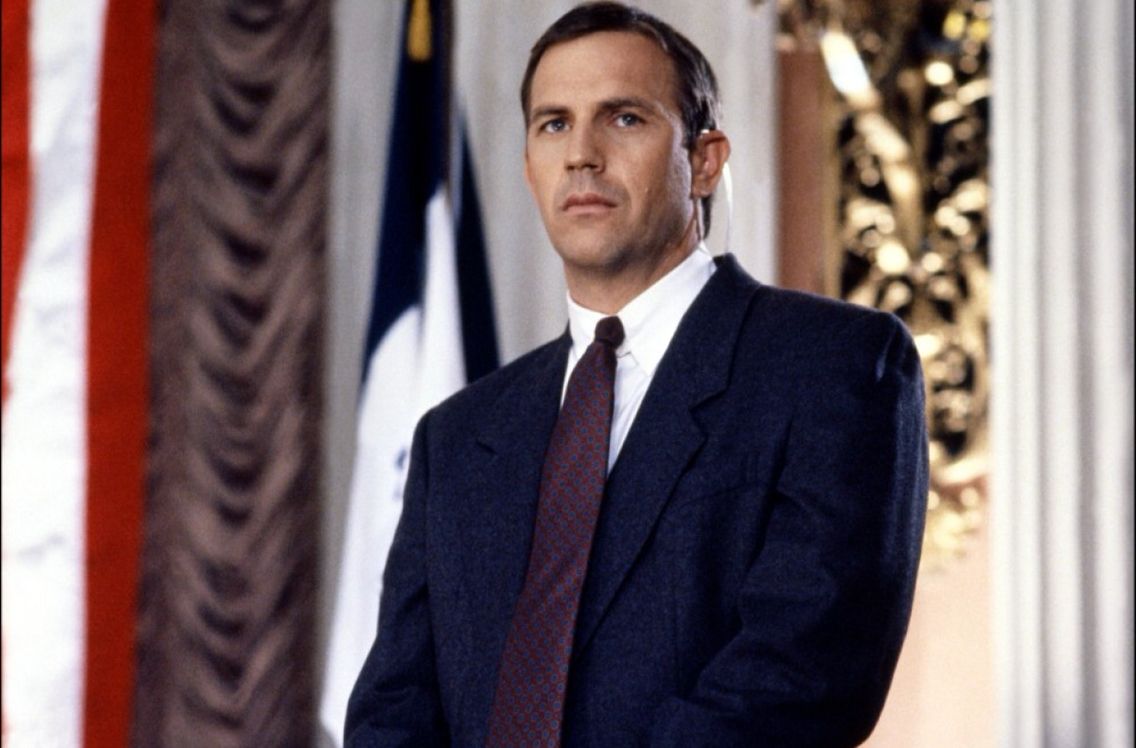
It may be hard to imagine that Harrison Ford was not the first choice to play America’s first action hero Commander-in-Chief, James Marshall.
[rtk_adunit_top]
However, Air Force One was originally developed as a vehicle for another major leading man, Kevin Costner.
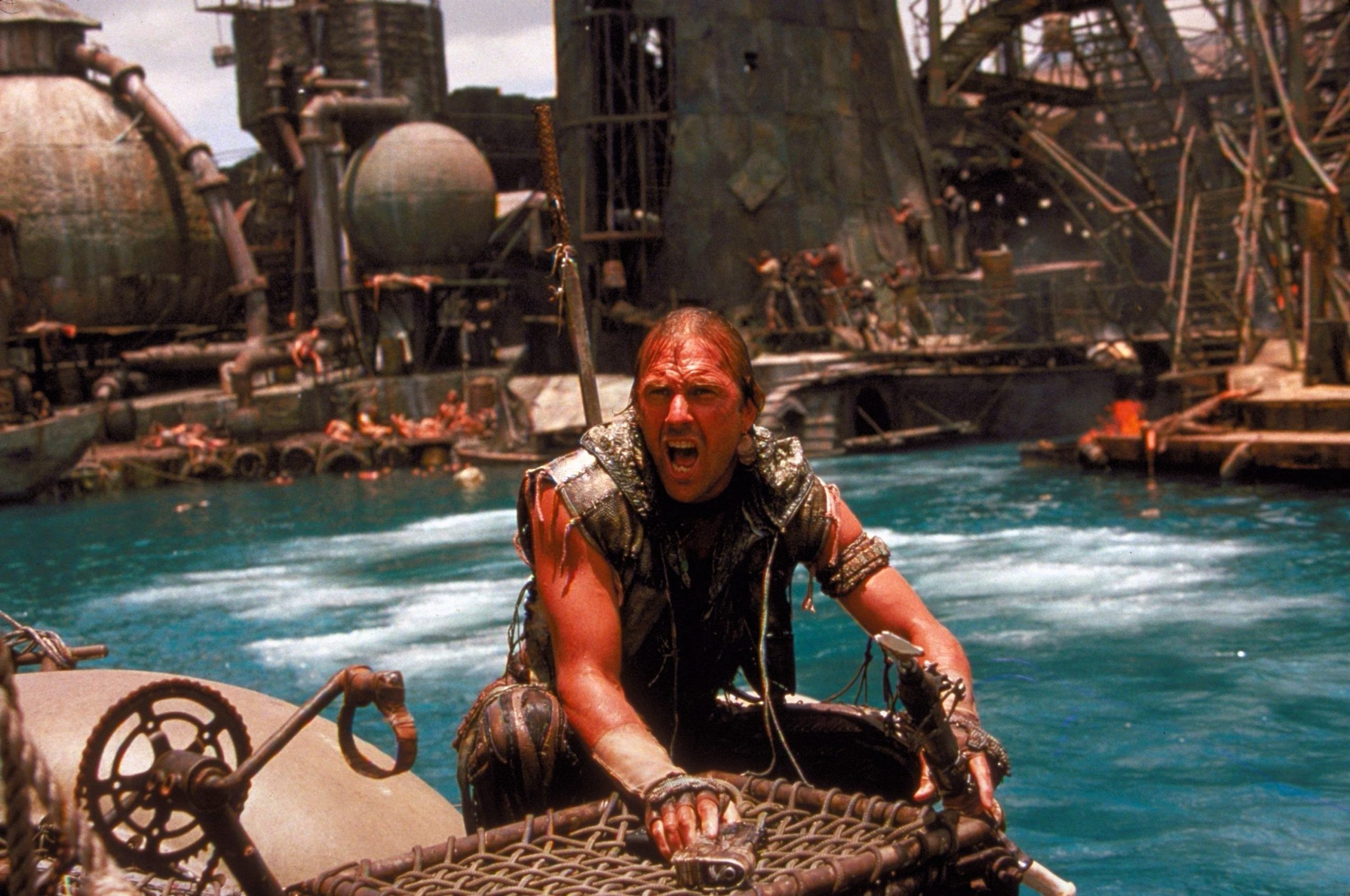
Up until the mid-90s, Costner had been one of the biggest box office draws in the world – and with hindsight, starring in Air Force One might have saved his career.
[rtk_adunit_middle]
Costner, who had already suffered a notorious flop with 1995’s Waterworld, dropped out of Air Force One to direct and star in 1997’s The Postman – which turned out to be a very bad career move.

Ford recalls, “Kevin knew this was a big commercial movie… he told [the producers] he would let it go only if I could do it.”
[rtk_adunit_bottom]
The actor went on to explain, “Kevin and I are not intimates. I’ve met him on a number of occasions and I like him very much. And I like him a lot more now because he really threw a winner my way.”
19. There’s no escape pod on the real Air Force One

While the movie is a work of fiction, Air Force One itself is of course a very real vehicle.
[rtk_adunit_top]
As the private plane of the President of the United States, the precise workings of the real Air Force One are a closely guarded secret.

For research purposes, Ford, director Wolfgang Petersen and several key crew members were given a tour of the plane itself.
[rtk_adunit_middle]
Unsurprisingly, they didn’t shoot the film on the real Air Force One, instead hiring a Boeing 747 for the exterior shots.
- Credit: The White House Archives
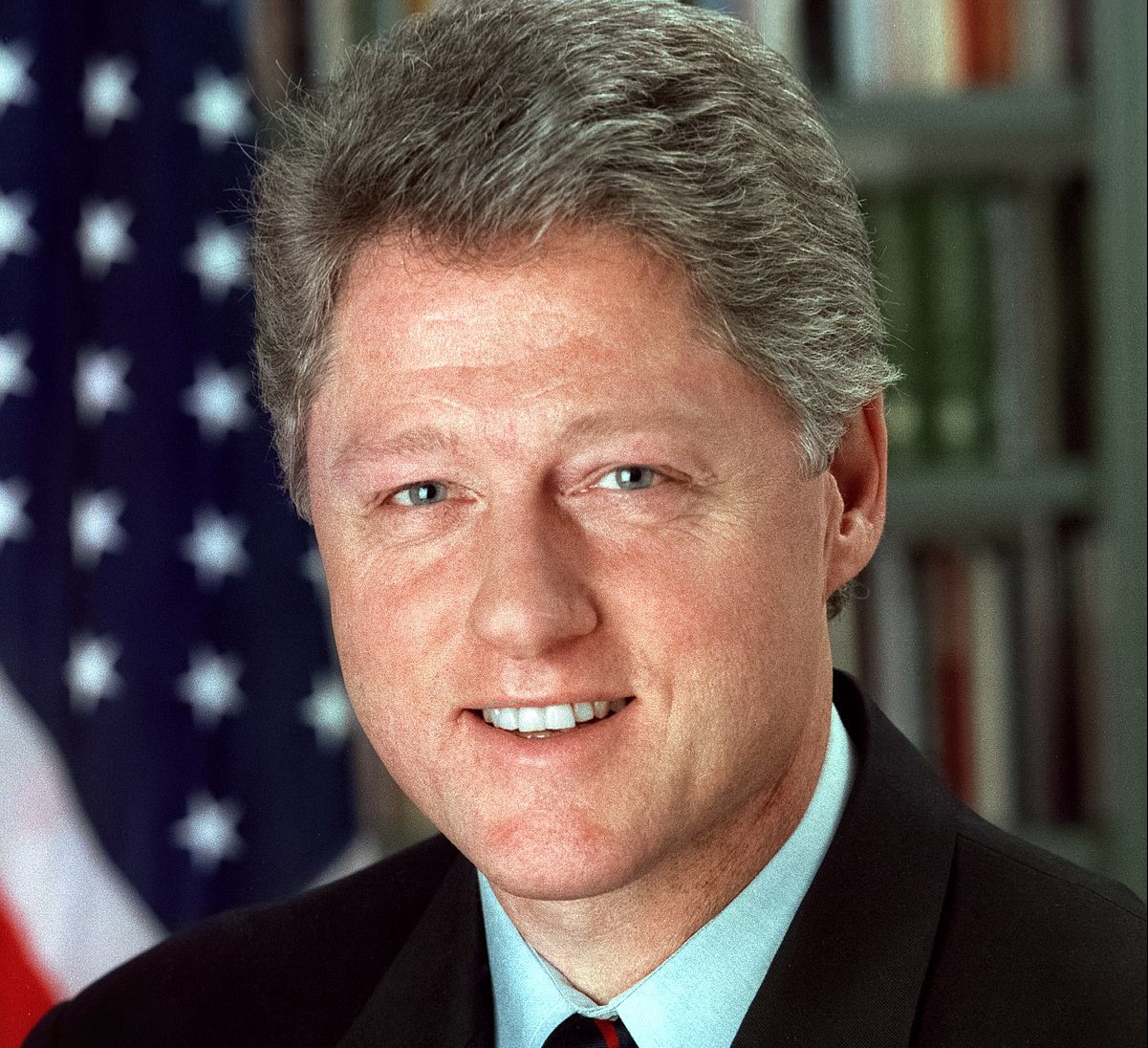
The filmmakers employed a degree of artistic licence regarding the plane; in reality, Air Force One does not have an escape pod for the President, or a parachute ramp.
[rtk_adunit_bottom]
When President Bill Clinton pointed out these inaccuracies, Wolfgang Petersen remarked that future models of Air Force One would surely incorporate these features shown in the movie.
18. Gary Oldman really punched Harrison Ford

As well as casting one of the most beloved good guy actors in film history, Air Force One also features one of the all-time great bad guy actors.
[rtk_adunit_top]
Gary Oldman appears opposite Harrison Ford as Egor Korshunov, leader of the terrorists who seize the President’s plane mid-flight.
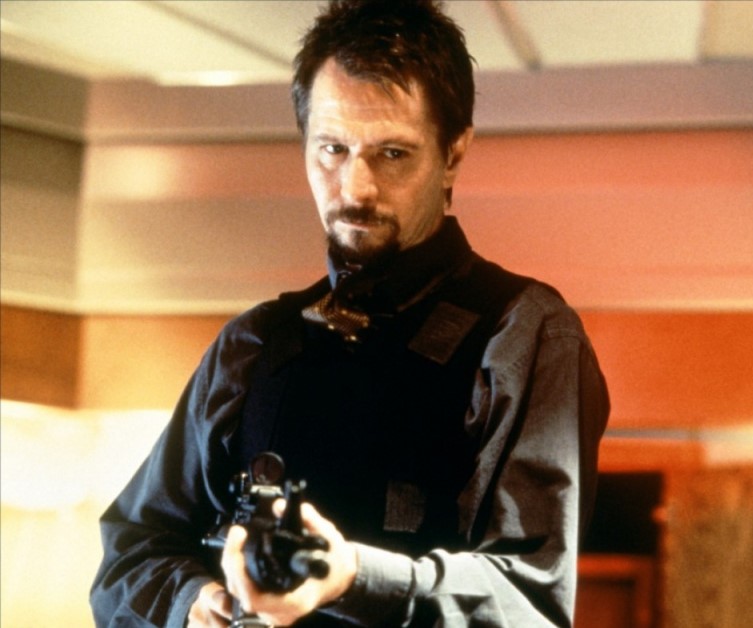
After rising to prominence in his native Britain in the 80s, Oldman became one of the premier Hollywood villains thanks to such films as Bram Stoker’s Dracula and Leon.
[rtk_adunit_middle]
Despite their combined experience, Ford and Oldman had a little trouble shooting the initial meeting between Ford’s President Marshall and Oldman’s Korshunov, when the violent radical strikes the US President in the face.
The choreographed moves the actors had rehearsed didn’t look convincing on camera, so finally Ford told Oldman to just hit him for real.
[rtk_adunit_bottom]
The take on which Oldman actually struck Ford in the face is the one that we see in the final film.
17. Glenn Close refused to shoot a scene of the Vice President breaking down in tears

The role of Air Force One’s Vice President was always intended for a woman (many years before Kamala Harris became the first woman to take that job in reality).
[rtk_adunit_top]
It wasn’t until quite late in the day that they finally found the actress to play Vice President Kathryn Bennett: Glenn Close.
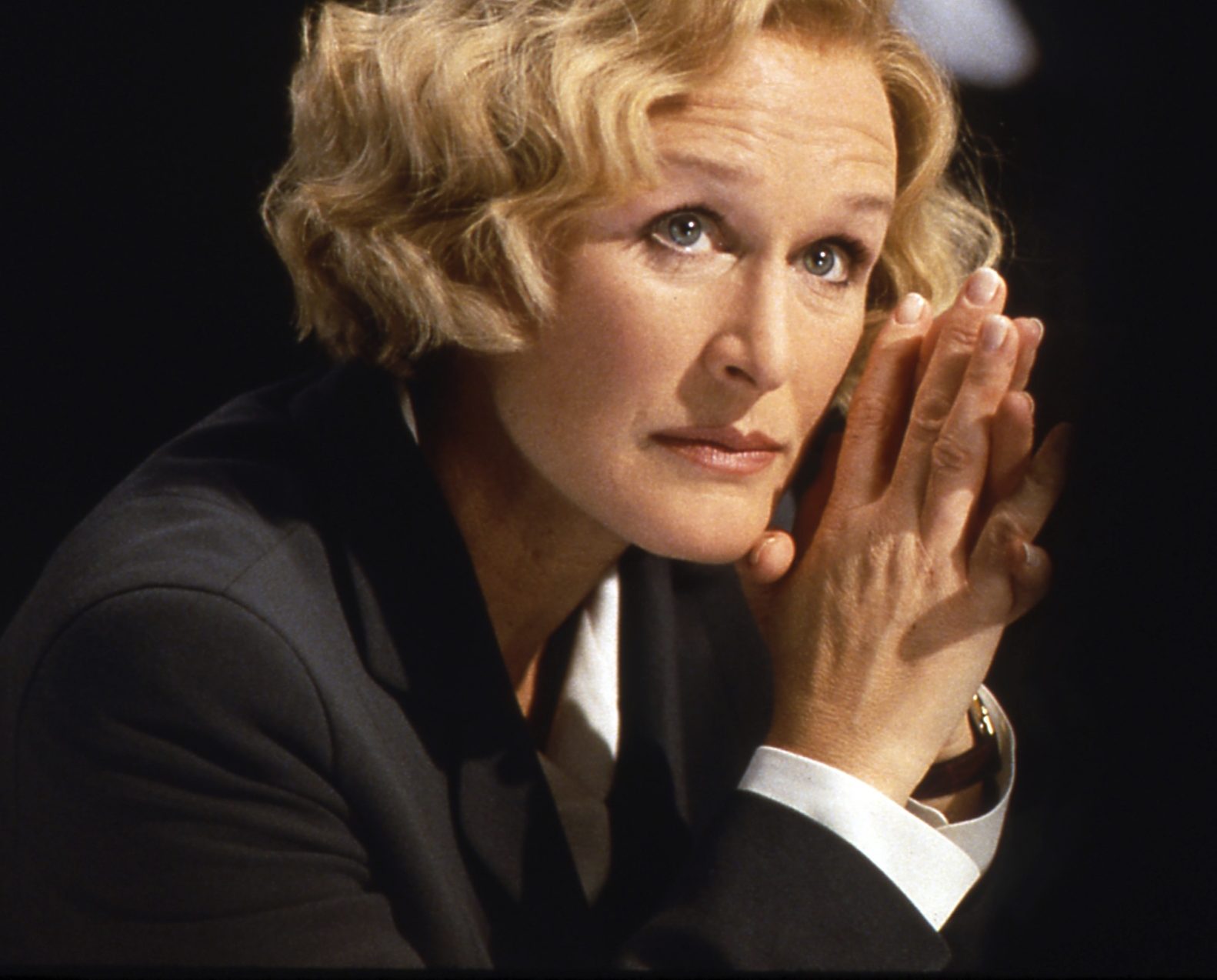
Ford himself suggested Close for the role and reached out to the actress to persuade her to join the movie’s star-studded roster.
[rtk_adunit_middle]
Close agreed to play the veep, but insisted on one minor revision to the script.

The actress demanded the removal of a moment in which Vice President Bennett bursts into tears.
[rtk_adunit_bottom]
Close refused to shoot this scene “because I thought we’d be doing women a disfavour if we had that cliche moment where she breaks down.’’
16. A cut scene explained the treachery of Xander Berkeley’s Gibbs
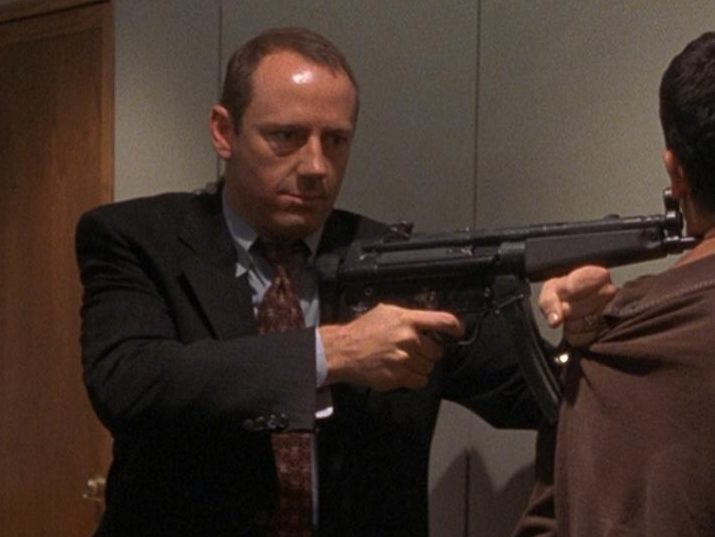
Xander Berkeley takes a key supporting role in Air Force One as Secret Service agent Gibbs.
[rtk_adunit_top]
The audience learns early on that Gibbs has turned against the President and is working with the terrorists.

However, Gibbs keeps up the pretense that he is still working for the President, and it isn’t until very late in the movie that the truth is revealed.
[rtk_adunit_middle]
In the original script, Gibbs was going to reveal himself as a traitor as soon as the terrorists seize the plane.

However, director Wolfgang Petersen decided against this, feeling it would add suspense for Gibbs’ true allegiance to remain a secret until late in the film.
[rtk_adunit_bottom]
Originally, there was also going to be a scene explaining why Gibbs sided with the terrorists (owing to his personal history during the Cold War), but this was deemed unnecessary and was cut from the film.
15. The argument over who should take charge in the President’s absence was inspired by real in-fighting after Reagan was shot

On top of all the high-stakes action on Air Force One itself, the movie also has no shortage of drama in its White House scenes.
[rtk_adunit_top]
During the scenes set in the White House Situation Room, we see Glenn Close’s Vice President and the rest of the White House staff trying to handle the volatile situation.
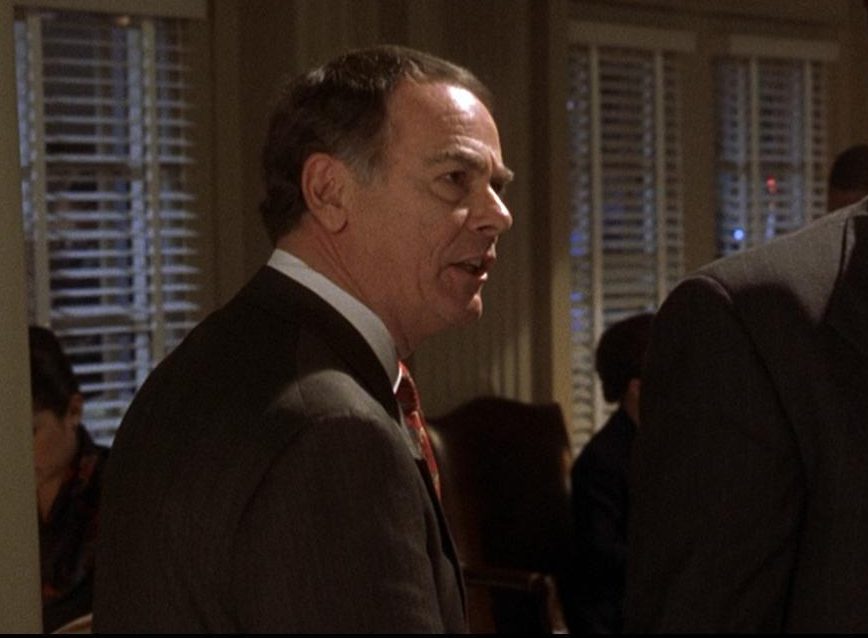
While all this is going on, Dean Stockwell’s Secretary of Defense conspires to be given command over the Vice President.
[rtk_adunit_middle]
This argument over the Presidential line of succession in times of crisis was inspired by real-life events.
- Credit: The White House Archives

Such a situation really did occur in the White House in 1981, when President Ronald Reagan was rushed to hospital after an assassination attempt.
[rtk_adunit_bottom]
At that time, Secretary of State Alexander Haig attempted to place himself as temporary commander-in-chief over then-Vice President George HW Bush.
14. Harrison Ford unsuccessfully lobbied for the film to get a PG-13 rating
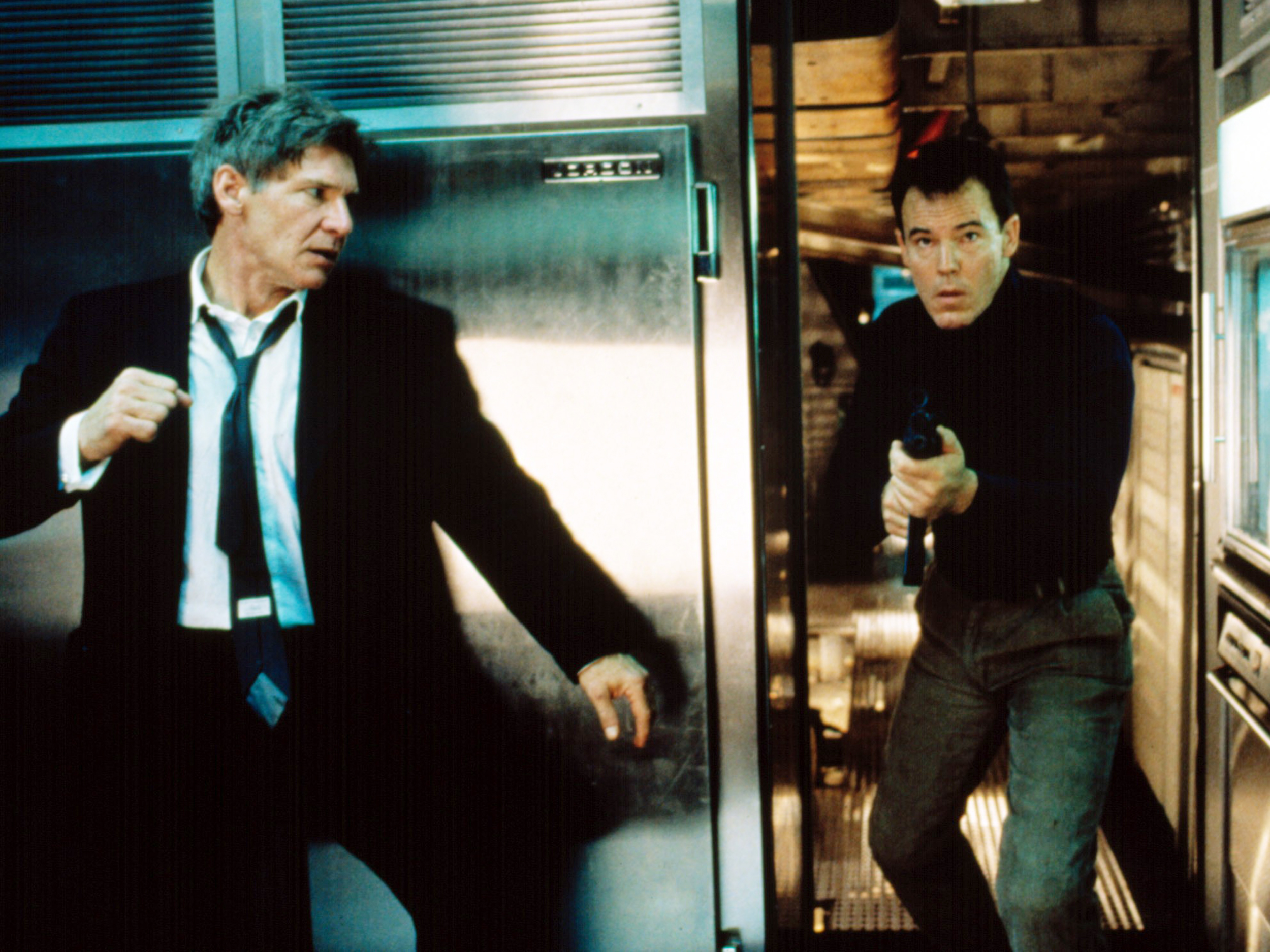
Harrison Ford hasn’t played the hero in too many movies that were primarily geared toward mature audiences.
[rtk_adunit_top]
Most of his best-loved good guy performances were in movies rated PG or PG-13, most famously the Star Wars and Indiana Jones series, as well as The Fugitive.
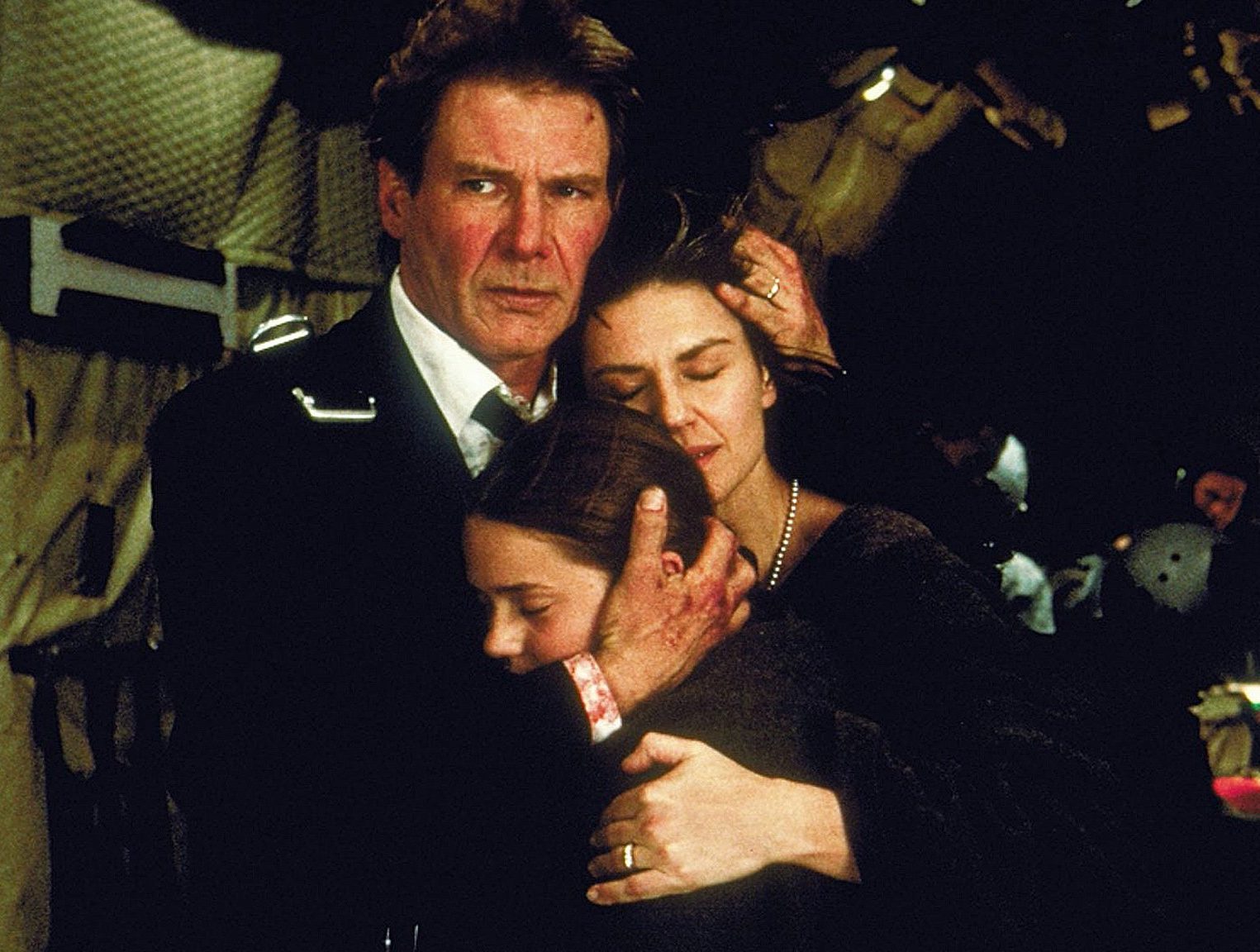
Early on, there were hopes that Air Force One would also be passed for theatrical exhibition under the PG-13 rating.
[rtk_adunit_middle]
There was a precedent there, as in 1994 Ford had successfully persuaded the Motion Picture Association of America to give his Patriot Games sequel Clear and Present Danger a PG-13 rating, after they had initially slapped it with an R.

Ford tried this a second time, when the MPAA gave Air Force One an R-rating – but this time around the MPAA would not budge.
[rtk_adunit_bottom]
While the violence in Air Force One is not very graphic, it was felt that the level of violence and threat was simply too much for a family-friendly rating.
13. Director Wolfgang Petersen described the shooting experience as ‘Air Force Fun’
Big-budget action movies are physically demanding for those on both sides of the camera.
[rtk_adunit_top]
As a result of this, working on such movies often proves to be quite a stressful experience for cast and crew alike.
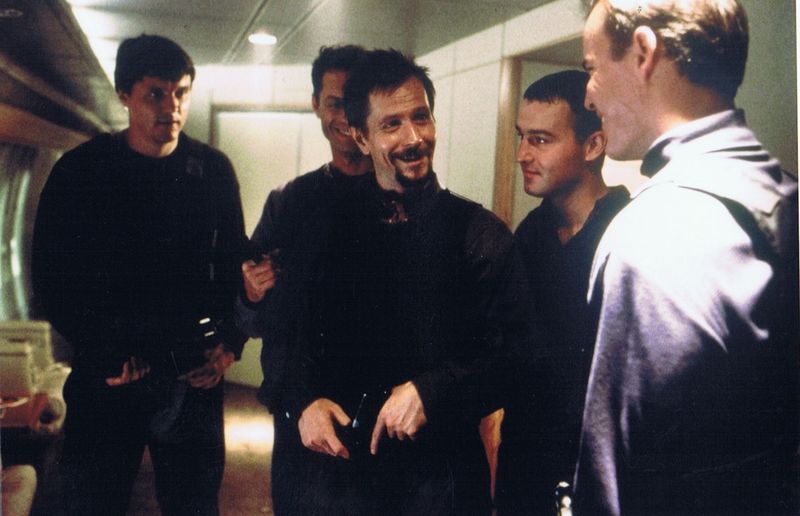
Happily, by all accounts, this was most definitely not the case on Air Force One.
[rtk_adunit_middle]
Director Wolfgang Petersen (below, with Ford) went so far as to describe their time shooting the movie as ‘Air Force Fun.’
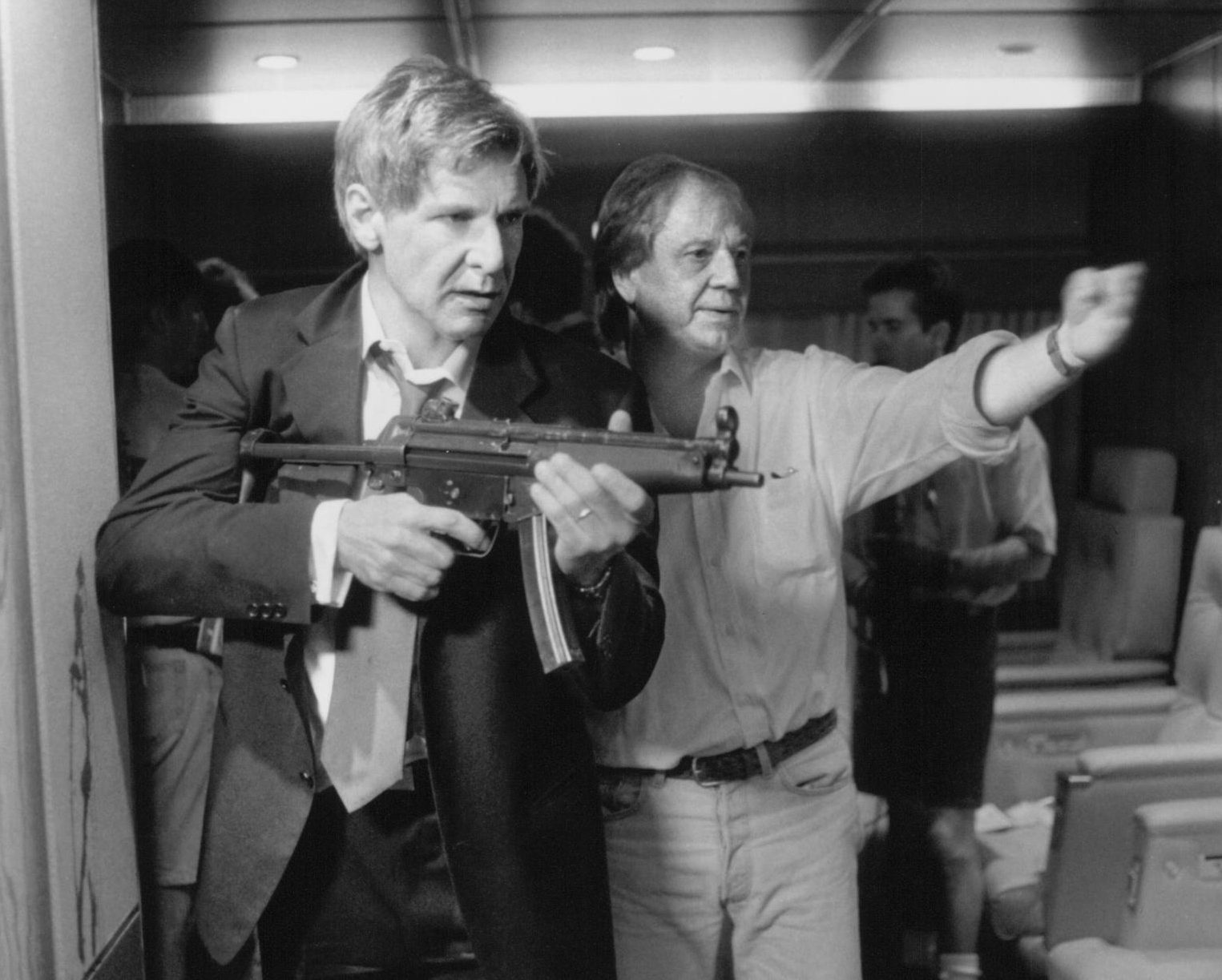
Leading men Ford and Oldman were said to be very relaxed on set, constantly in a good mood and cracking jokes when the cameras weren’t rolling.
[rtk_adunit_bottom]
It probably didn’t hurt that, by contrast with a lot of action movies, the actors were in a comfortable interior location for the vast majority of the shoot.
12. Ford’s James Marshall has been voted the best fictional President ever

Air Force One is the first major movie to present the President of the United States as a full-on action hero.
[rtk_adunit_top]
However, Harrison Ford’s James Marshall is just one among a great number of fictional Presidents to appear on film and television.
In 2016, the Wall Street Journal ran a poll to find out just who America’s all-time favourite fictional screen President was.
[rtk_adunit_middle]
The number one spot on the list was taken by – yes, you’ve guessed it – Air Force One’s President Marshall.
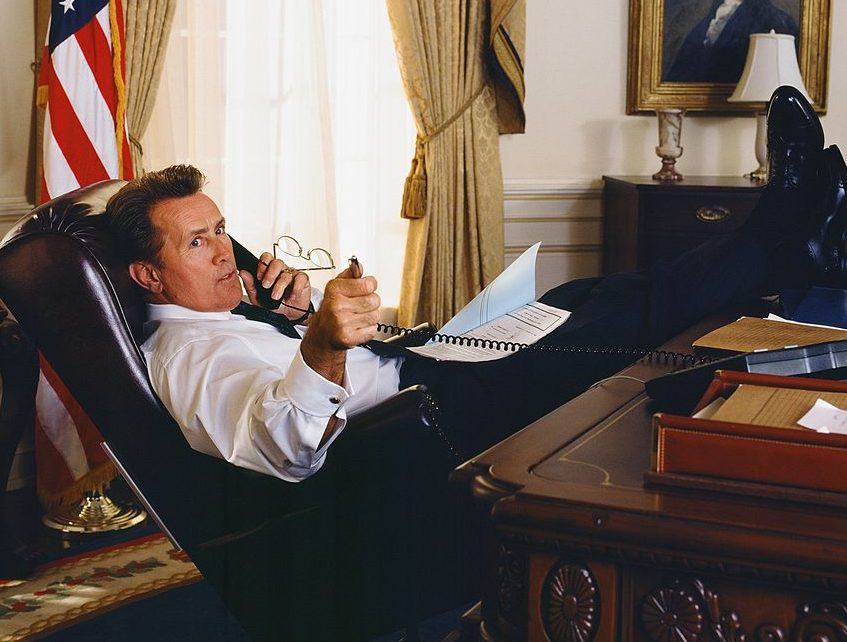
Harrison Ford’s character beat Martin Sheen’s Jed Bartlet of The West Wing (above) into second place, with Bill Pullman’s Thomas J. Whitmore of Independence Day coming third.
[rtk_adunit_bottom]
Others mentioned in the top ten include Kevin Kline’s Dave Kovic in Dave and Jamie Foxx’s James Sawyer in White House Down.
11. Donald Trump has said it’s one of his favourite films
- Credit: Gage Skidmore via Wikimedia Commons
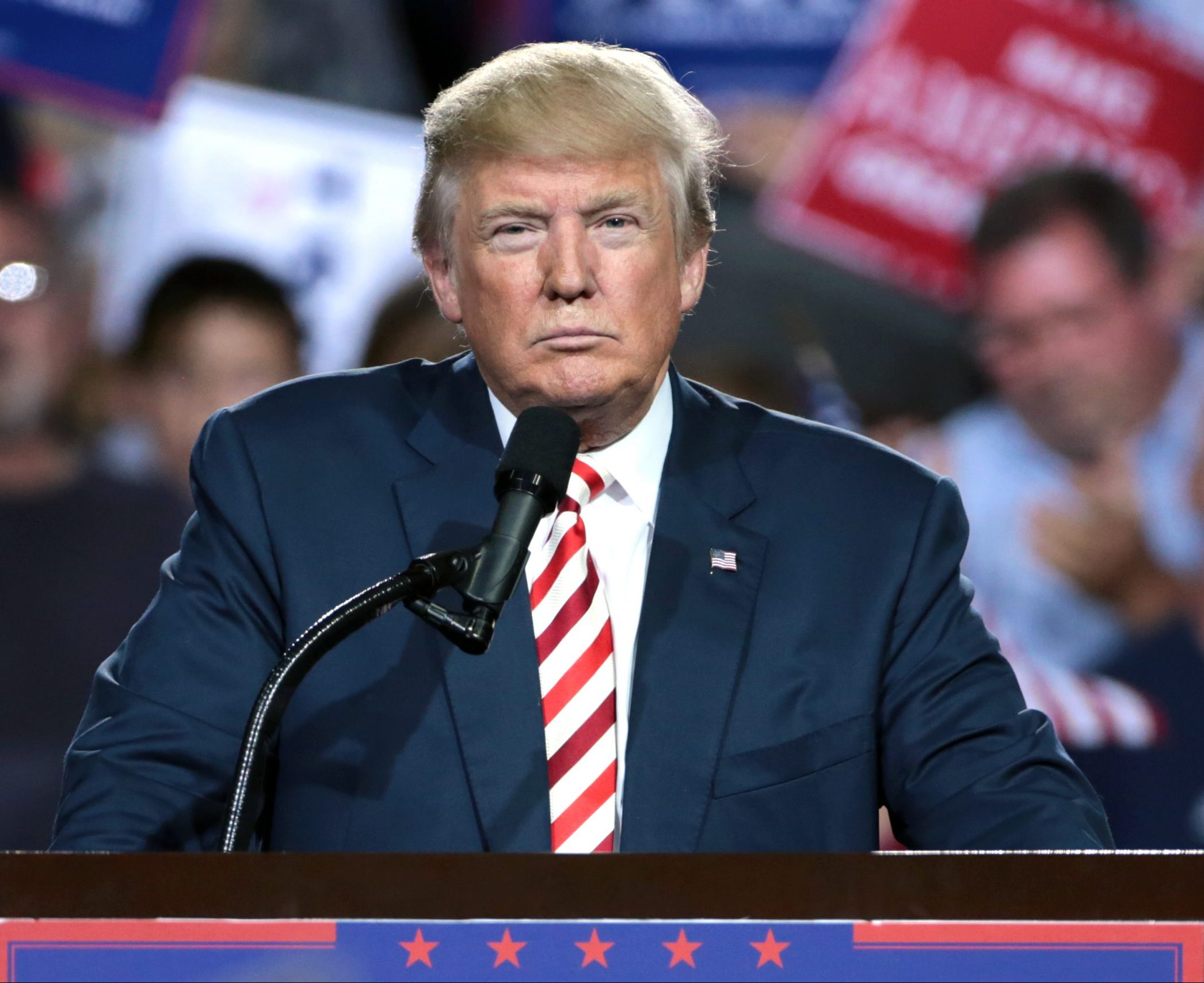
In the run-up to the 2016 US Presidential election, Donald Trump expressed his love for Air Force One (although he seemed to forget its title).
[rtk_adunit_top]
Trump stated, “My favourite was Harrison Ford on the plane. I love Harrison Ford – and not just because he rents my properties. He stood up for America.”
When Ford was informed of this in an interview, he didn’t seem especially moved by the idea that his work had inspired the man who was then campaigning for the Republican candidacy.
[rtk_adunit_middle]
The actor flatly declared to camera, “Donald, it was a movie. It’s not like this in real life. But how would you know?”
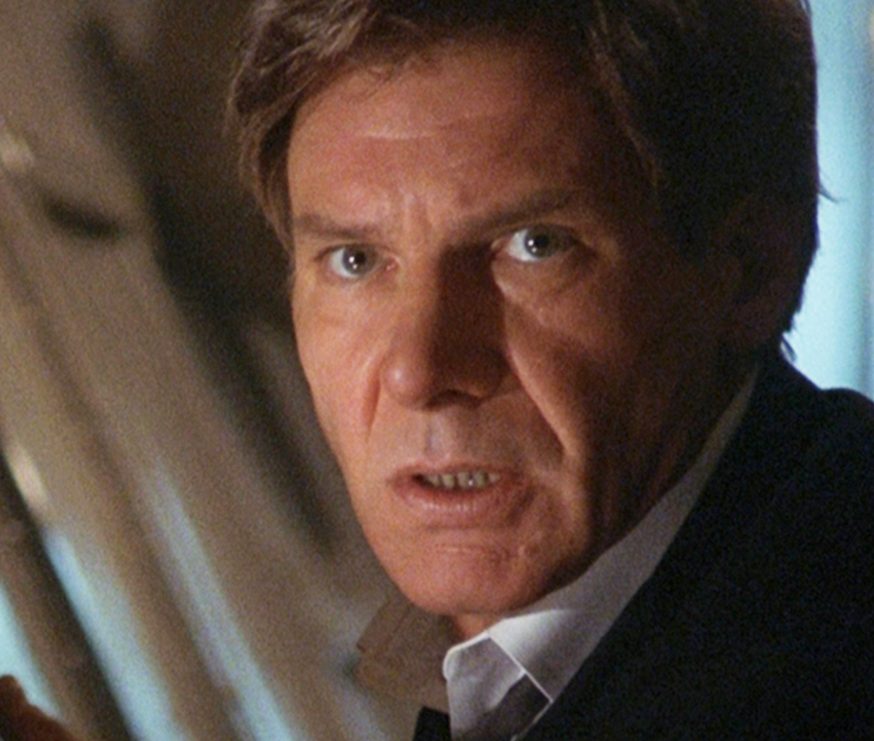
Later, when Trump was officially declared the winner of the election, Trump walked out on stage to the main theme from Air Force One.
[rtk_adunit_bottom]
Infamously, another movie reported to be a firm favourite of the former President is Jean-Claude Van Damme’s Bloodsport.
10. Radek was locked up in the same prison seen in The Shawshank Redemption
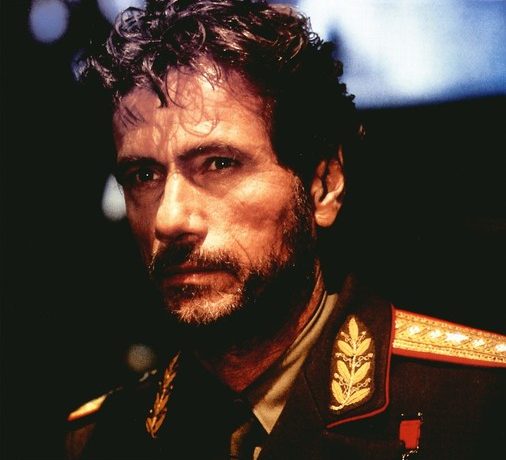
Air Force One reunites Wolfgang Petersen with actor Jürgen Prochnow, who previously starred in the German director’s international breakthrough movie Das Boot.
[rtk_adunit_top]
Prochnow takes the key supporting role of General Ivan Radek, dictator of Kazakstahn who is taken into custody in the film’s opening scenes.
The terrorists who seize Air Force One do so with the demand that Radek be released from prison.
[rtk_adunit_middle]
If something seems a bit familiar about the gloomy old prison that Radek winds up in, that may be because it was also in the most famous prison movie ever made.

The prison sequences were shot at the Ohio State Reformatory, which was also the main location used in 1994’s The Shawshank Redemption.
[rtk_adunit_bottom]
Other movies shot at Ohio State Reformatory include Tango & Cash and recent Oscar-winner Judas and the Black Messiah.
9. The main cast and crew never left America
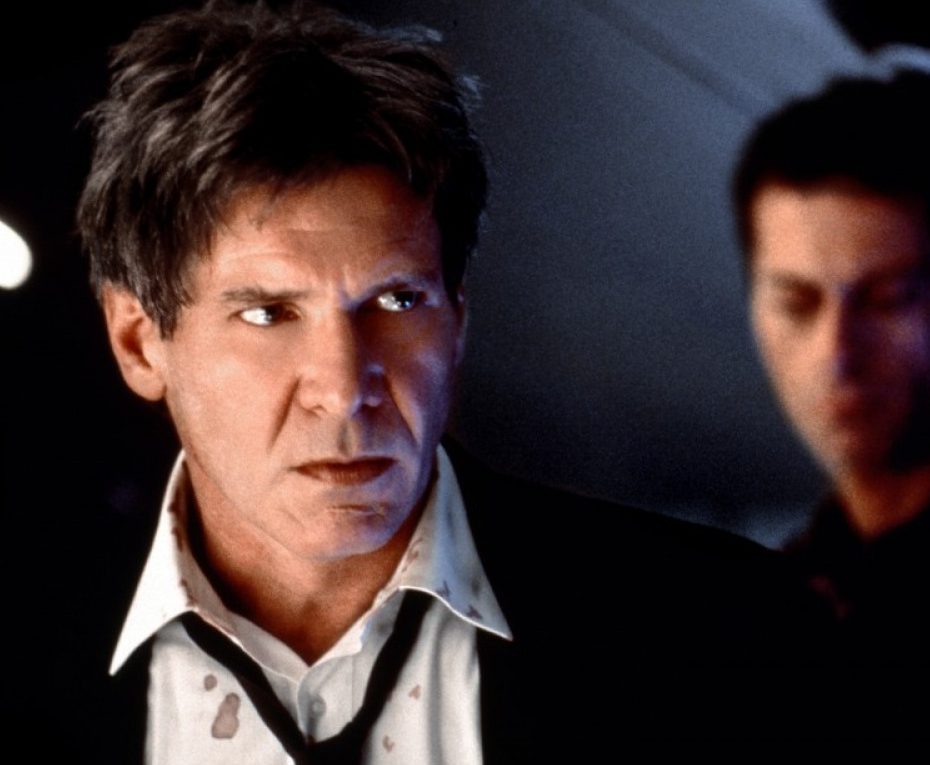
Although Air Force One casts Harrison Ford as the US President, he’s never in the US at any point in the film.
[rtk_adunit_top]
After opening in Moscow, the film sees Ford’s President Marshall and his staff airborne for the duration, never touching down on American soil.

In reality, however, the main cast and crew of Air Force One never left the USA.
[rtk_adunit_middle]
The early diplomatic dinner scene (where Ford gives his memorable ‘be afraid’ speech) was shot not in Moscow, but at a country club in Los Angeles. Similarly, the scenes at Moscow’s Sheremetyevo International Airport were actually shot at LA International Airport.
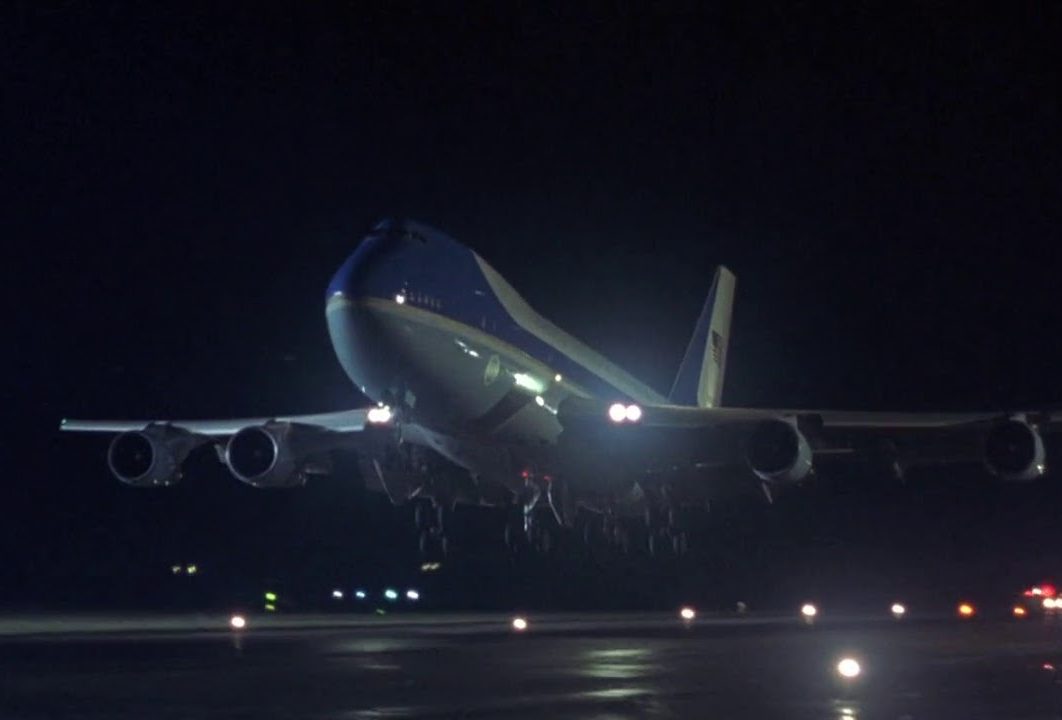
Meanwhile, the scenes featuring Jürgen Prochnow’s General Radek were all shot in Ohio: Severance Hall and Cuyahoga County Courthouse were used for Radek’s palace, whilst Ohio State Reformatory was used for the prison.
[rtk_adunit_bottom]
The only photography for Air Force One which took place outside the US was for the shots of Moscow’s Red Square, which were captured by the Second Unit team.
8. Ford insists he didn’t base his performance on Bill Clinton
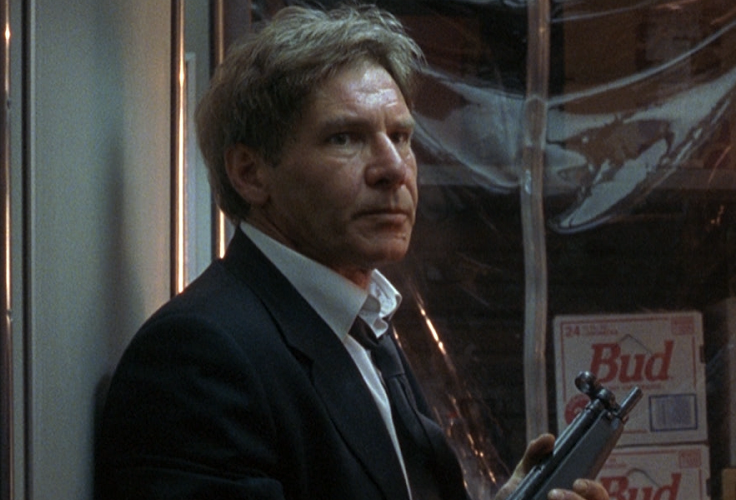
Air Force One was shot while Bill Clinton, the 42nd President of the United States, was in office.
[rtk_adunit_top]
It was known at the time that Harrison Ford was a supporter and indeed friend of President Clinton.
- Credit: Kenneth C. Zirkel via Wikimedia Commons

This naturally resulted in some speculation that Ford may have modelled his performance on the incumbent Commander-in-Chief.
[rtk_adunit_middle]
However, the actor stressed this was not the case, declaring, “I didn’t base my performance on President Clinton or on any other President, living or dead.”
- Credit: Gage Skidmore via Wikimedia Commons
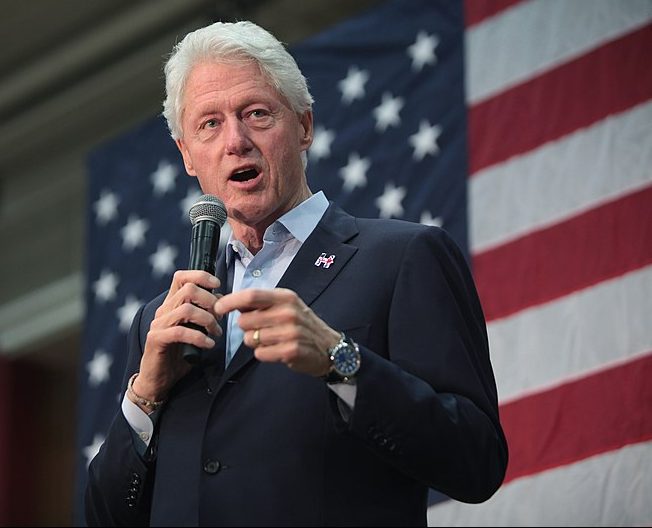
While Air Force One was not made with the official support and co-operation of The White House, President Clinton was said to have been a fan.
[rtk_adunit_bottom]
President Clinton (who was also known to have loved Independence Day, which saw Billl Pullman play another heroic President) publicly praised the movie, and reportedly it was screened twice at the White House’s private cinema.
7. Making the movie was more expensive than running the real Air Force One

As you’d expect given it’s a major action movie with big-name stars, Air Force One had a serious price tag attached.
[rtk_adunit_top]
A 1997 report by Entertainment Weekly put the film’s production budget at $78 million (although others have since stated it was closer to $85 million).
EW did the math, and calculated that making the movie cost a great deal more than it does to operate the actual Air Force One.
[rtk_adunit_middle]
Official White House sources said at the time that running the President’s private plane clocked up a bill of $40,250 per hour.

Breaking down the film’s reported $78 million budget over its 90 day, 12 hours a day shoot, the movie Air Force One cost an estimated $72,222 per hour.
[rtk_adunit_bottom]
Then again, the real Air Force One doesn’t so often have to deal with mass shoot-outs, explosions, mid-air passenger transfers, and so on. At least, we don’t think it does.
6. Ford’s fee was 100 times the annual salary of the real US President

A sizeable chunk of Air Force One’s substantial budget went on its cast – in particular its superstar leading man.
[rtk_adunit_top]
Harrison Ford commanded the handsome sum of $20 million, plus a cut of the gross profits, for his work on the film.
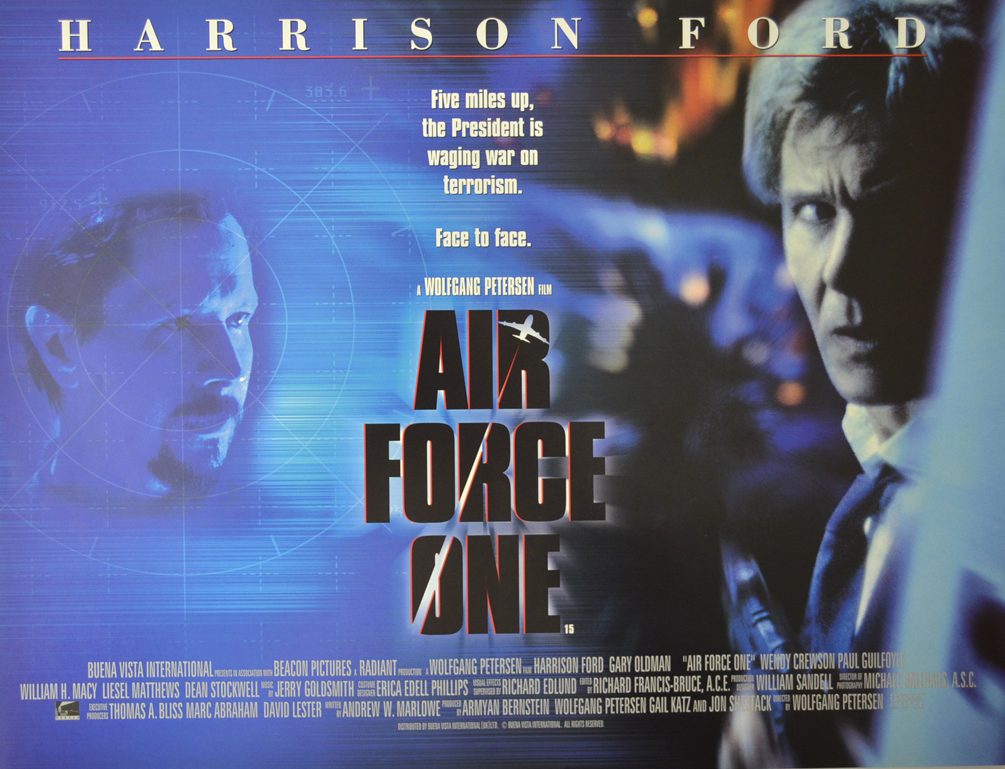
This is, of course, a considerably greater amount of money than the actual President of the time, Bill Clinton, could hope to earn in office.
[rtk_adunit_middle]
Back then, the US President reportedly earned $200,000 a year – exactly 100 times less than Ford earned for playing the President on film.
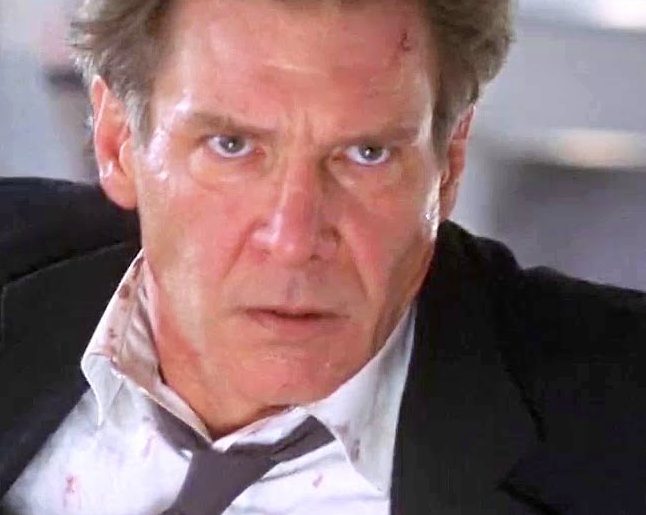
On being asked about this, the actor laughed, “[my salary]’s against the back end. Maybe if the President could work out a similar arrangement, he’d do just as well.”
[rtk_adunit_bottom]
The President’s salary has gone up in the years since: current US President Joe Biden is said to be earning $400,000 annually during his term.
5. Back-up choices to play President Marshall included Arnold Schwarzenegger, Gene Hackman and Keanu Reeves
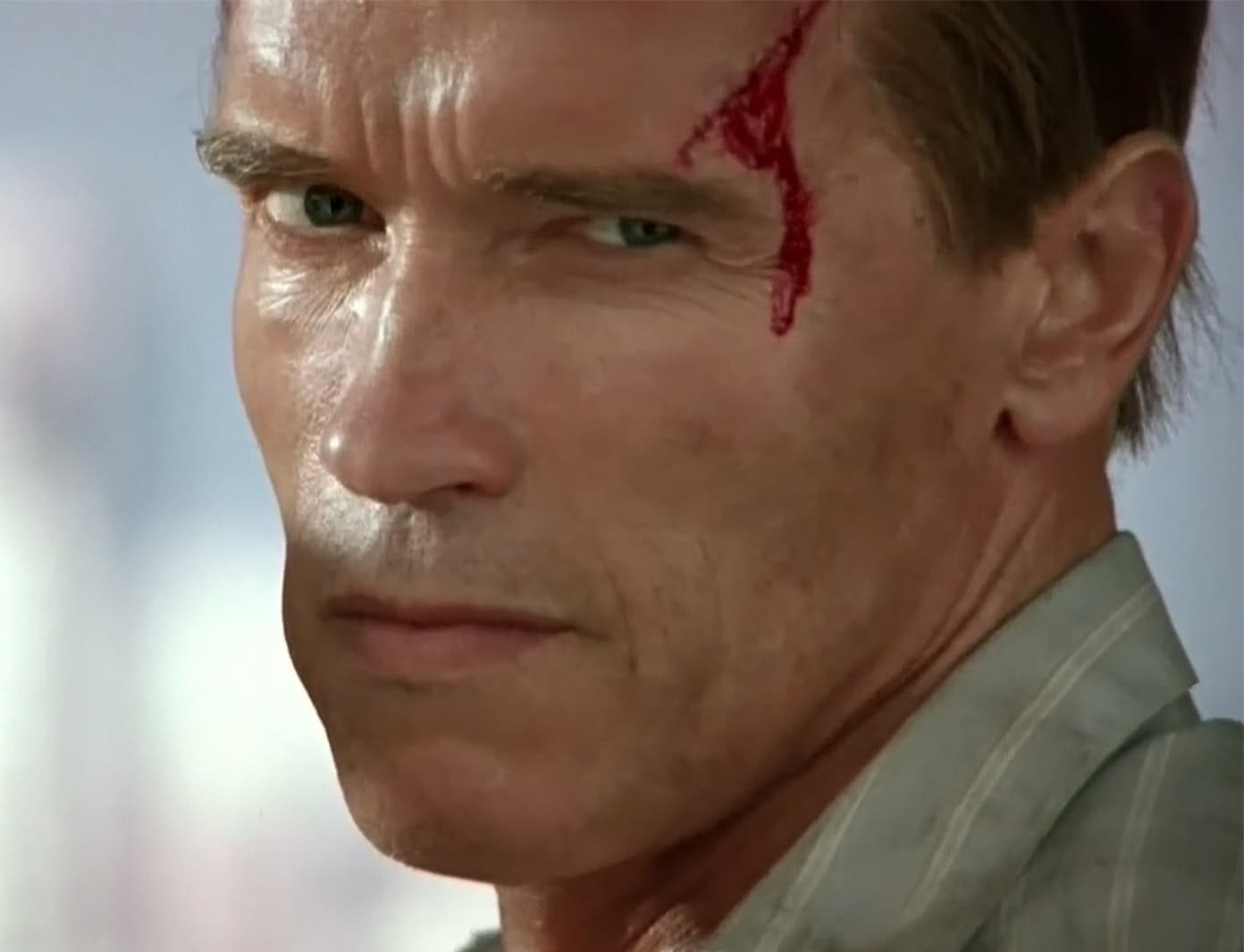
After being developed with Kevin Costner in mind, Air Force One proved to be an ideal film for Harrison Ford.
[rtk_adunit_top]
Of course, before the filmmakers knew for sure that Ford was in, other potential leading men had to be kept in mind – but some of the other contenders for President James Marshall seem a little unlikely.

For one, they were considering Arnold Schwarzenegger, the bodybuilder-turned-action movie star who has never made any secret of his presidential ambitions (although, having not been born in the US, he’ll have to be content with two terms as Governor of California).
[rtk_adunit_middle]
Another actor the filmmakers had in mind was Keanu Reeves – despite the fact that the notoriously youthful actor was only 33 at the time, almost a full decade younger than any US President to date.

The more age-appropriate Gene Hackman was also reportedly considered, but hated the script. Other possibilities included Dennis Quaid, Tom Hanks and Tommy Lee Jones.
[rtk_adunit_bottom]
John Malkovich (who had previously worked with director Wolfgang Peterson on In The Line of Fire) was also in the frame, but chose instead to play the bad guy in another airborne action movie: Con Air.
4. Fox owner Rupert Murdoch thought Air Force One would be a bigger hit than Titanic
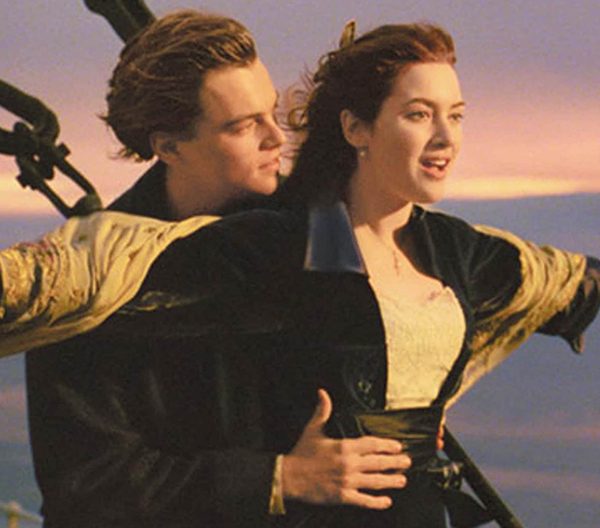
Air Force One arrived in cinemas in 1997 four months ahead of another high-profile epic, Titanic.
[rtk_adunit_top]
Writer-director James Cameron’s historical romance-disaster movie had endured an infamously troubled production, with costs ballooning to a then-unprecedented $200 million.

This being the case, there were very real fears that the film could be a major money-loser for studios 20th Century Fox and Paramount, who co-financed the film.
[rtk_adunit_middle]
One person who had such concerns was Rupert Murdoch, the media tycoon who owned 20th Century Fox at the time.

On seeing the completed cut of Titanic, Murdoch reportedly declared, “yes, it’s good, but it’s no Air Force One!”
[rtk_adunit_bottom]
Of course, Titanic proved to be a significantly bigger hit than Air Force One, becoming the first movie to earn over $1 billion at the box office and winning a slew of Oscars, including Best Picture.
3. Rejected musical compositions by Randy Newman ended up being used in Toy Story 3

Originally, the musical score for Air Force One was the work of the esteemed musician Randy Newman.
[rtk_adunit_top]
Newman, best known for his work as a singer and songwriter as well as his film work, produced a full score to the movie.
- Credit: Angela George via Wikimedia Commons
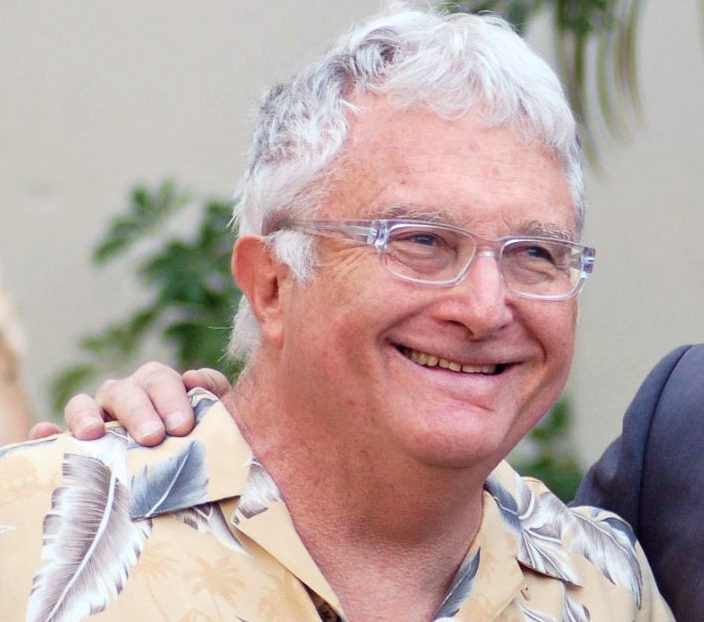
Unfortunately, Newman’s work was rejected by director Wolfgang Petersen, who found the music impossible to take seriously.
[rtk_adunit_middle]
With Newman dismissed, the filmmakers hired another notable Hollywood composer, Jerry Goldsmith, in his place.
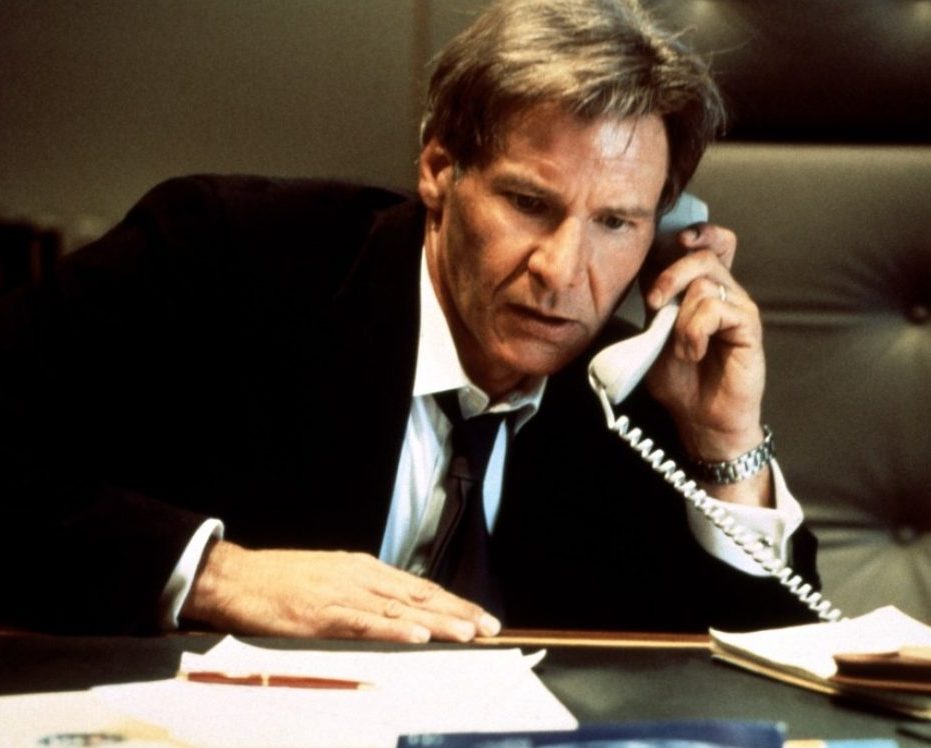
Goldsmith was hired under pressured conditions, obliged to provide a full score in less than two weeks.
[rtk_adunit_bottom]
Some of Randy Newman’s rejected, unintentionally funny Air Force One music was later utilised in his score for Toy Story 3.
2. It forced Starship Troopers into a later release date

Air Force One was a co-production of two of the biggest powerhouses in Hollywood, Disney and Sony.
[rtk_adunit_top]
The film was a collaborative effort between Disney’s Touchstone Pictures, and the Sony-owned Columbia Pictures.

Nor was Air Force One the only major film in 1997 made through this partnership, as Disney and Sony also worked together on Starship Troopers.
[rtk_adunit_middle]
Originally, the sci-fi action epic from director Paul Verhoeven was poised to open in the summer – around the same time as Air Force One.
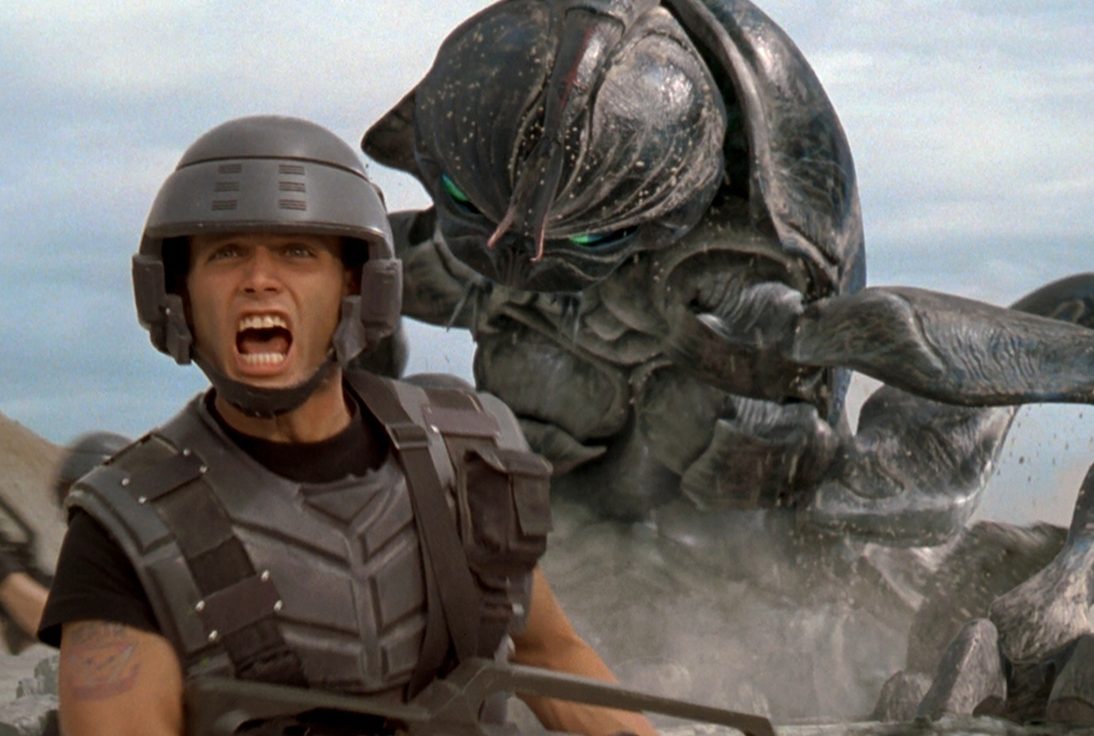
However, studio executives predicted that Air Force One was the more likely hit, and they didn’t want to release another big action film that might threaten its chances at the box office. As such, Starship Troopers was delayed until November.
[rtk_adunit_bottom]
This turned out well for Air Force One, which took over $315 million worldwide in ticket sales. Unfortunately, Starship Troopers didn’t do nearly as well with grosses of just over $121 million.
1. The football game was really from 1992

The early scenes of Air Force One do their best to establish Ford’s President James Marshall as a pretty regular guy.
[rtk_adunit_top]
On reaching the plane and setting off for home, all the President wants is to drink a beer and watch that day’s football game, without anyone letting him know the score.
- Credit: Bossman11 via Wikimedia Commons
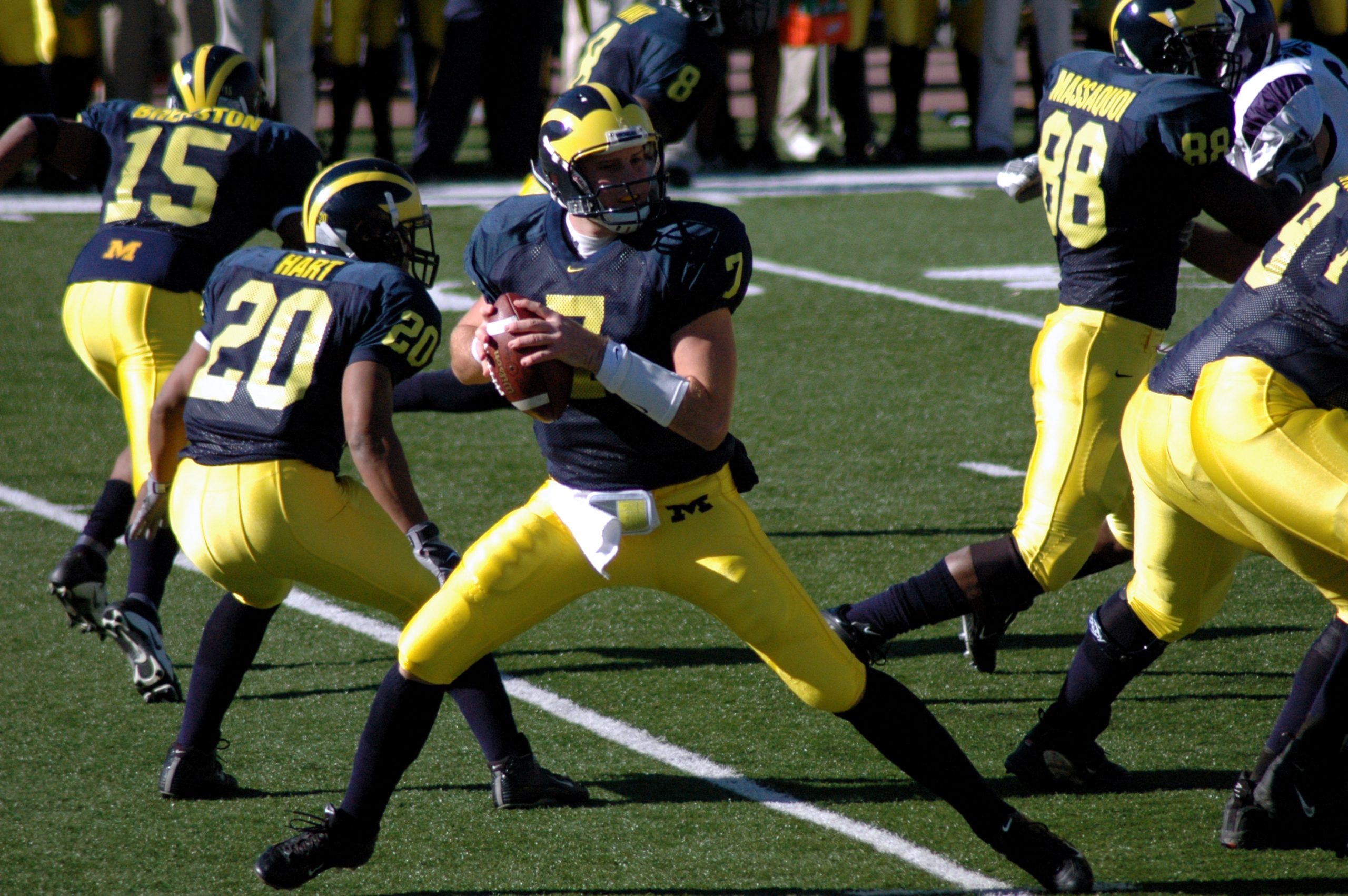
Footage from a real game was used: Michigan against Notre Dame in South Bend, from September 1992.
[rtk_adunit_middle]
Making Ford’s President Marshall a fan of Michigan is a bit of an in-joke, relating to the 38th President, Gerald Ford.
- Credit: The White House Archives
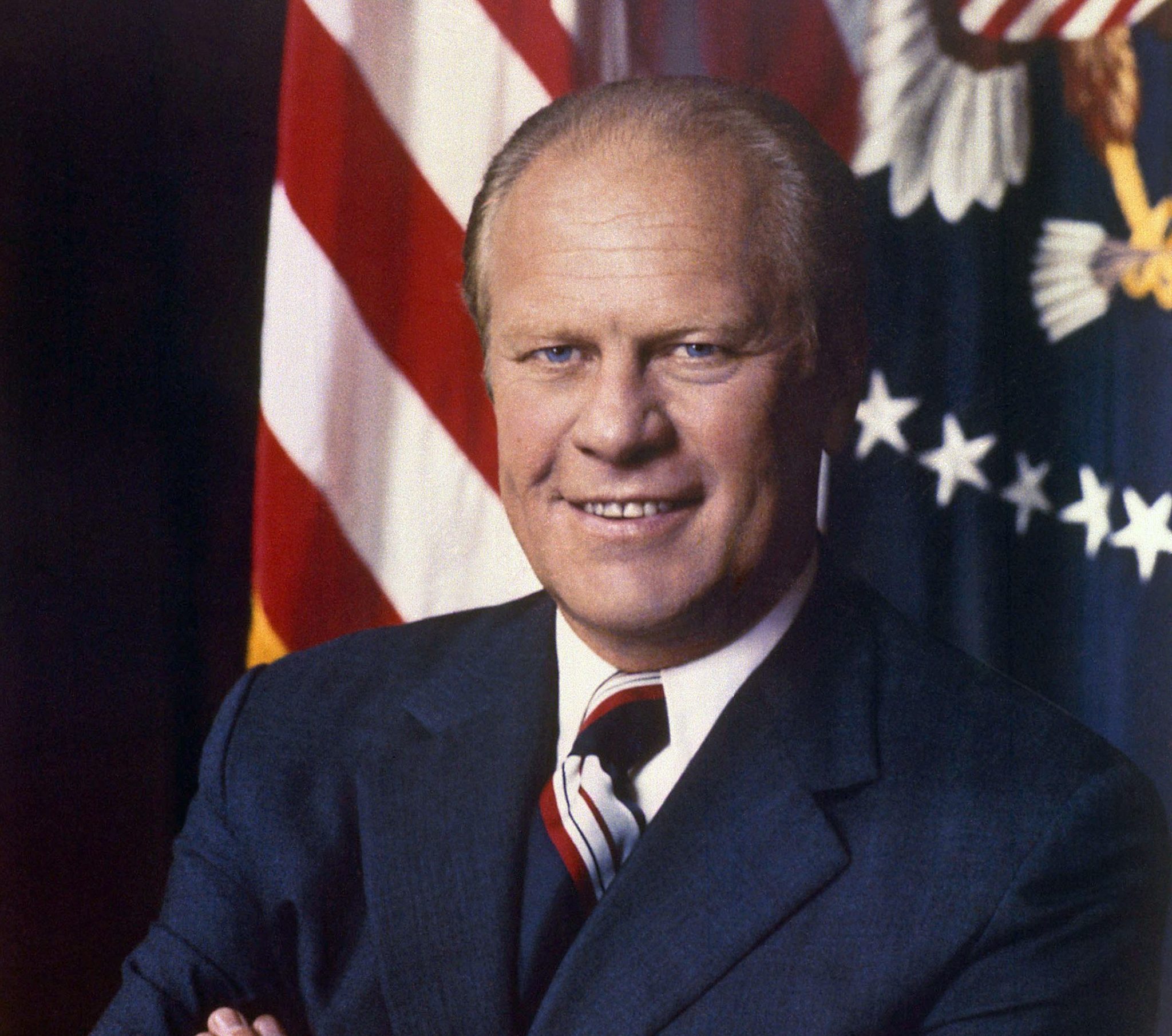
The real President Ford was known to be a supporter of Michigan, having been to college there, and TV news reports from his time in office often showed him watching Michigan games on TV.
[rtk_adunit_end]

